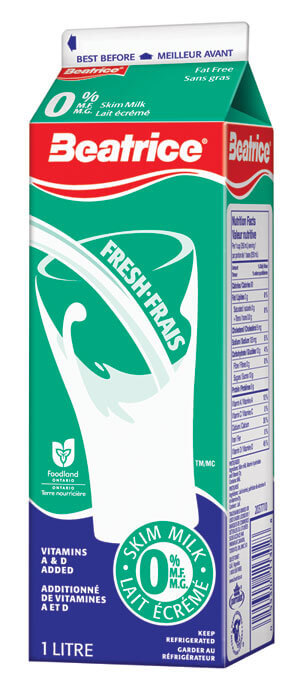

With this in mind, skim milk is the better option if someone is looking to increase their protein intake while adding a minimal amount of calories. In contrast, whole milk contains the same amount of protein, but the same serving size provides around 60 calories of energy.Īs a result, whole milk has a protein density of only 22.7%. These ratios give a protein density of 40%. One gram of protein is equal to 4 calories, so there is a total of 13.6 calories from protein per 100 grams. Since it is much lower in total calories, skim milk has a higher protein density than other milk options.įor instance, 100 grams of skim milk contains 34 calories and 3.4 grams of protein. Of course, all milk is a good source of calcium, and so this isn’t a unique point, but skim milk does have the best protein density. There are two main benefits of skim milk protein and calcium content. What Health Benefits Does Skim Milk Have? It also provides an excellent source of complete protein. Key Point: Skim milk provides a similar nutrient profile to whole milk, and it is particularly high in the mineral calcium. To learn more about the production process, there is a useful resource here.

In these containers, the milk awaits collection.

To make skim milk, producers use a centrifugal separator to remove the fat globules from the milk.Ĭentrifugal separators operate by spinning the milk at extremely high forces.ĭuring this process, the milk and the fat separate and run off into two spouts leading to different containers within the centrifuge. The main difference in the nutrition profile of whole milk and skim milk is the calories and fat content.Īs skim milk contains no fat, the total amount of calories (1 gram of fat = 9 calories) is much lower. It is also common to hear people call it ‘non-fat’ or ‘fat-free’ milk. Skimmed Milk (British English): This milk typically comes in red packaging or has a ‘red top.’.
CARBS IN SKIM MILK 1 CUP FULL
We will examine the full nutritional content a little later on, but skim milk usually has between 0% and 0.1% fat content.ĭepending on where you live, you may know this type of milk by different names: Skim milk is simply milk that has had most of the butterfat removed and some vitamins added by fortification. This article takes a balanced look at the nutrition profile, health benefits, concerns, and scientific research on skim milk. On the other hand, some people have concerns about skim milk’s higher level of processing. While some people claim it is lower in “harmful” saturated fat, others feel that dairy fat is perfectly healthy. A 1-cup serving of skim milk has around 83 calories, no saturated fat, and only 5 mg of cholesterol.There are lots of facts and myths about skim milk, which is a type of milk with the fat removed. If you drink cow's milk, most doctors recommend low-fat or nonfat versions. Saturated fat in your diet raises LDL ("bad") cholesterol, which increases your risk of heart disease and stroke, according to the American Heart Association. What's more, a study published in Food Science & Nutrition found that grass-fed dairy cows produce milk with the highest levels of omega-3 compared with other cows, which is important because omega-3s promote heart health.īut when it comes to your cholesterol levels, “high-fat dairy could get you into trouble,” says John Day, MD, a cardiologist in Salt Lake City. Cow’s milk also contains potassium, which may help prevent high blood pressure (hypertension). “It’s a tremendous source of protein and nutrients, contains essential vitamins and minerals, and provides a third of a person’s daily recommended intake of calcium,” Krivitsky says. Whole cow’s milk contains around 160 calories, 5 grams (g) of saturated fat, and 35 milligrams (mg) of cholesterol in a 1 cup - or 8 ounce (oz) - serving. “Each milk will provide different pluses and minuses.” “People choose a milk based on tolerability and taste - in addition to health beliefs,” says Deborah Krivitsky, RD, a dietitian based in Boston. When you're trying to get to healthy cholesterol levels, you'll want to limit the amount of saturated fat in your diet.Īlternative milks can provide similar nutritional benefits if you're watching your cholesterol, are lactose intolerant, vegan, or allergic to certain proteins in cow’s milk or if you simply prefer something other than cow's milk. But too much of the saturated fat and cholesterol in whole milk - and even in 2 percent milk - may counteract those health benefits. But what do the newer types of milk mean for your heart health if you have high cholesterol? Old-fashioned cow’s milk, for example, is loaded with calcium and vitamins A and D, which are all good for your heart and overall health. The milk aisle is changing, now offering a growing number of options for what to pour on your cereal or drink down as a late-night snack.


 0 kommentar(er)
0 kommentar(er)
